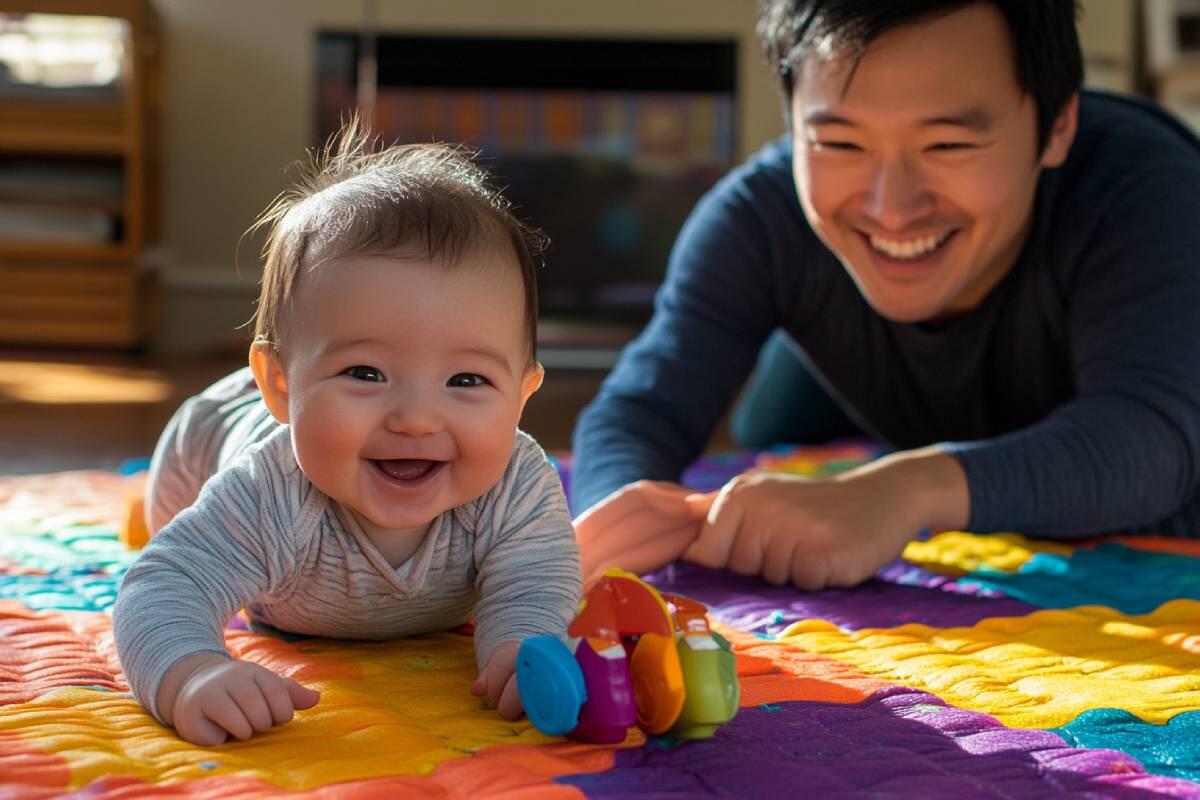How to Encourage Your Baby to Crawl
Crawling is a significant milestone in a baby's motor development, marking their first steps toward independence and exploration. This phase not only strengthens physical abilities but also contributes to cognitive and emotional growth. At Clinic Consultation, we understand the importance of guiding parents through this crucial stage, ensuring that babies achieve their developmental milestones in a supportive and nurturing environment. In this article, we’ll share effective strategies to help encourage your baby to crawl.
Why Encouraging Crawling is Crucial
Crawling is much more than a mode of movement; it’s a foundational step in a baby’s overall development. This activity helps strengthen the muscles in their arms, legs, back, and neck, paving the way for skills such as standing, walking, and running. Moreover, crawling enhances coordination, balance, and spatial awareness, essential for physical growth.
Beyond physical benefits, crawling fosters cognitive development. Babies start to understand distance, explore their surroundings, and interact with their environment. This process stimulates curiosity and builds confidence, preparing them for future learning experiences. Clinic Consultation offers expert guidance to ensure your baby develops these essential skills at the right pace.
Practical Strategies to Encourage Crawling
Create a Safe and Stimulating Environment
A secure, inviting space is key to encouraging your baby to crawl. Use a soft play mat or a cushioned floor to protect your baby during this exploratory phase. Ensure the area is free from sharp edges, small objects, or anything that could pose a choking hazard. A clean, open space allows your baby to move freely and focus on crawling.
Introduce toys that grab your baby’s attention, placing them just out of reach to motivate movement. Toys that light up, make sounds, or have interesting textures are particularly effective in sparking curiosity and encouraging effort.
Lead by Example and Provide Support
Babies are natural imitators, so getting down on the floor to demonstrate crawling can be a fun and effective way to teach them. Show them how to move their hands and knees while staying close for encouragement. This bonding activity not only motivates your baby but also builds their trust and confidence.
If your baby struggles to balance, gently support their torso to help them stay in the crawling position. Gradually reduce assistance as they grow stronger and more confident. Remember, every baby progresses at their own pace, so patience and consistent encouragement are essential.
Incorporating Crawling into Daily Activities
Encourage Movement During Playtime
Playtime offers excellent opportunities to promote crawling. Engage your baby with games that require them to move, such as rolling a ball or playing peek-a-boo from across the room. Setting up simple obstacle courses with pillows or soft toys can also make crawling more exciting and help them practice navigating different surfaces.
Interactive toys that encourage movement, such as musical crawl mats or push toys, can further support this phase. Make playtime a shared experience by cheering on your baby and celebrating small milestones to keep them motivated.
Respect Your Baby’s Individual Rhythm
Each baby develops at their own pace, and some may take longer to crawl than others. While it’s important to provide opportunities for movement, avoid putting pressure on your baby. Focus on creating a positive environment that celebrates their progress, no matter how small.
If you have concerns about your baby’s development, Clinic Consultation offers specialized pediatric services to assess their progress and provide personalized advice.
Overcoming Challenges in Crawling
Identify and Address Obstacles
Some babies may be hesitant to crawl due to discomfort or a lack of exposure to floor time. Observe your baby’s reactions and adapt their environment accordingly. For instance, they might prefer crawling on softer surfaces or need more time to develop upper body strength.
Ensure your baby gets plenty of supervised tummy time, as this builds the muscles necessary for crawling. Gradually increase the duration and make it engaging with toys or interaction.
Seek Professional Guidance if Needed
If your baby shows no interest in crawling despite regular encouragement, it may be helpful to consult a pediatric specialist. Clinic Consultation’s team of experts can evaluate your baby’s development and provide tailored strategies to address any challenges, ensuring they meet their milestones.
Professional support can identify potential delays early and offer effective interventions, giving your baby the best start possible.
Benefits of Crawling for Overall Development
Crawling brings a range of benefits beyond physical strength. It improves hand-eye coordination, spatial awareness, and motor planning skills. These abilities lay the groundwork for tasks like writing, reading, and problem-solving later in life.
Furthermore, crawling fosters independence and curiosity. As babies explore their surroundings, they develop confidence and resilience, crucial traits for their future growth. Clinic Consultation is committed to supporting parents during this exciting phase, providing expert advice and care to help babies thrive.
Conclusion
Helping your baby learn to crawl is an exciting journey filled with discovery and bonding. With a safe environment, engaging activities, and plenty of encouragement, your baby will develop the skills they need at their own pace. Remember that every milestone is a step toward their independence and growth.
For personalized guidance and expert support, reach out to Clinic Consultation. Our specialists are here to help you navigate every stage of your baby’s development with confidence and care.
